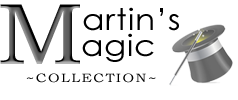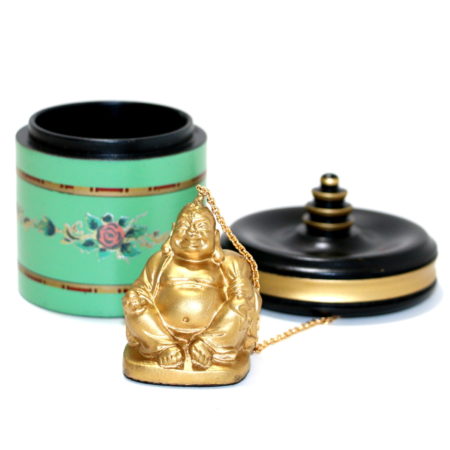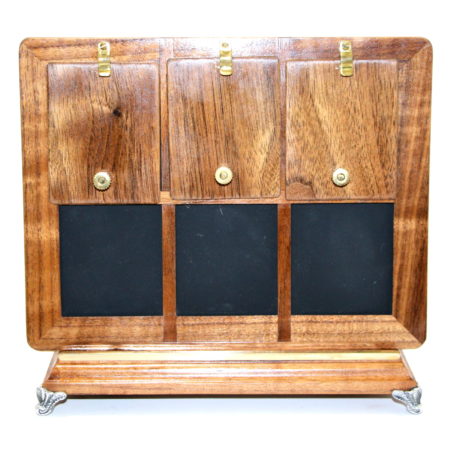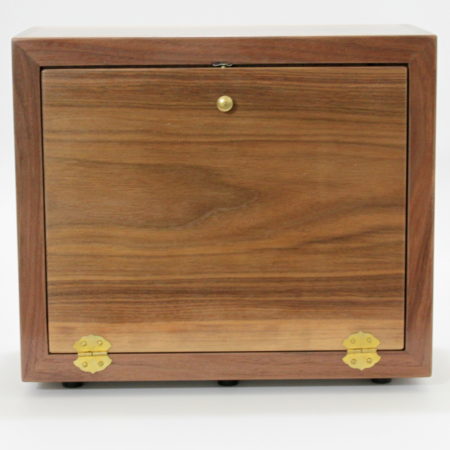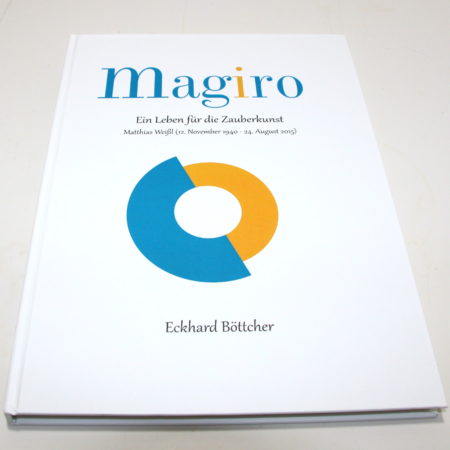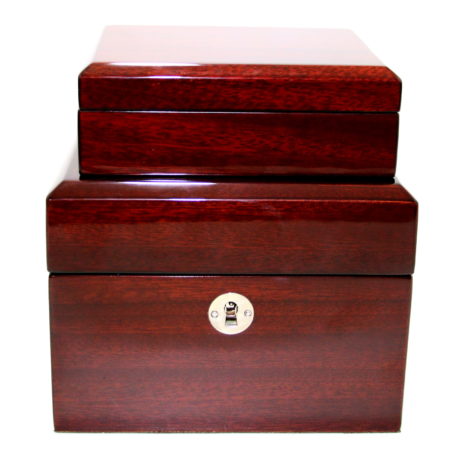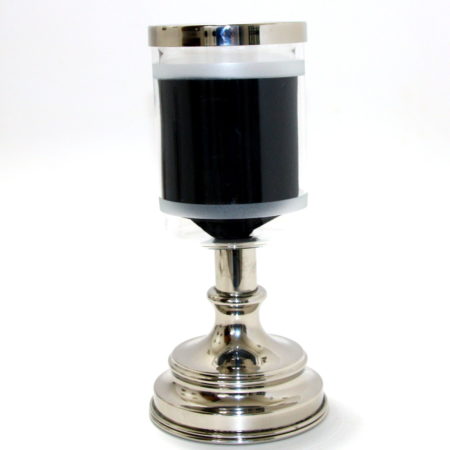
The Ink to Water (or Ink Goblet as we have here) was invented by Hofzinser c. 1845 and it is a beautiful illusion where a glass of black ink turns into a glass of clear water with goldfish merrily swimming in the water. The famed Austrian magic shop Zauber-Klingl created their version along with others almost 100 years ago and the best versions where created with real glass and gleaming chrome.
When Vienna Magic c. 1991 (owned by Stefan Simek at the time) set out to produce their version of the Ink Goblet (Tinten Pokal) they created a precision made prop that was a 100% replica of the Klingl version – they spared no expense and created a marvel. This is Olde Worlde Craftsmanship for sure just like the Vieneese crfatsmen of old who created the early versions. Real glass and shiny chrome that we are not used to seeing in this world of plastic and iPhones. No electronics or anything to be replaced and the vanish of the ink is instant. There is a slight woosh when the magic happens but typically you would cover this with a blank firing pistol or wand.
Comes with some weighted plastic fish so they are seen floating in the water, but of course you could use real goldfish if you wanted (and they gave their permission of course).
This is a real beauty that you would love to see in your collection and show to your friends.
Click here for more information.
